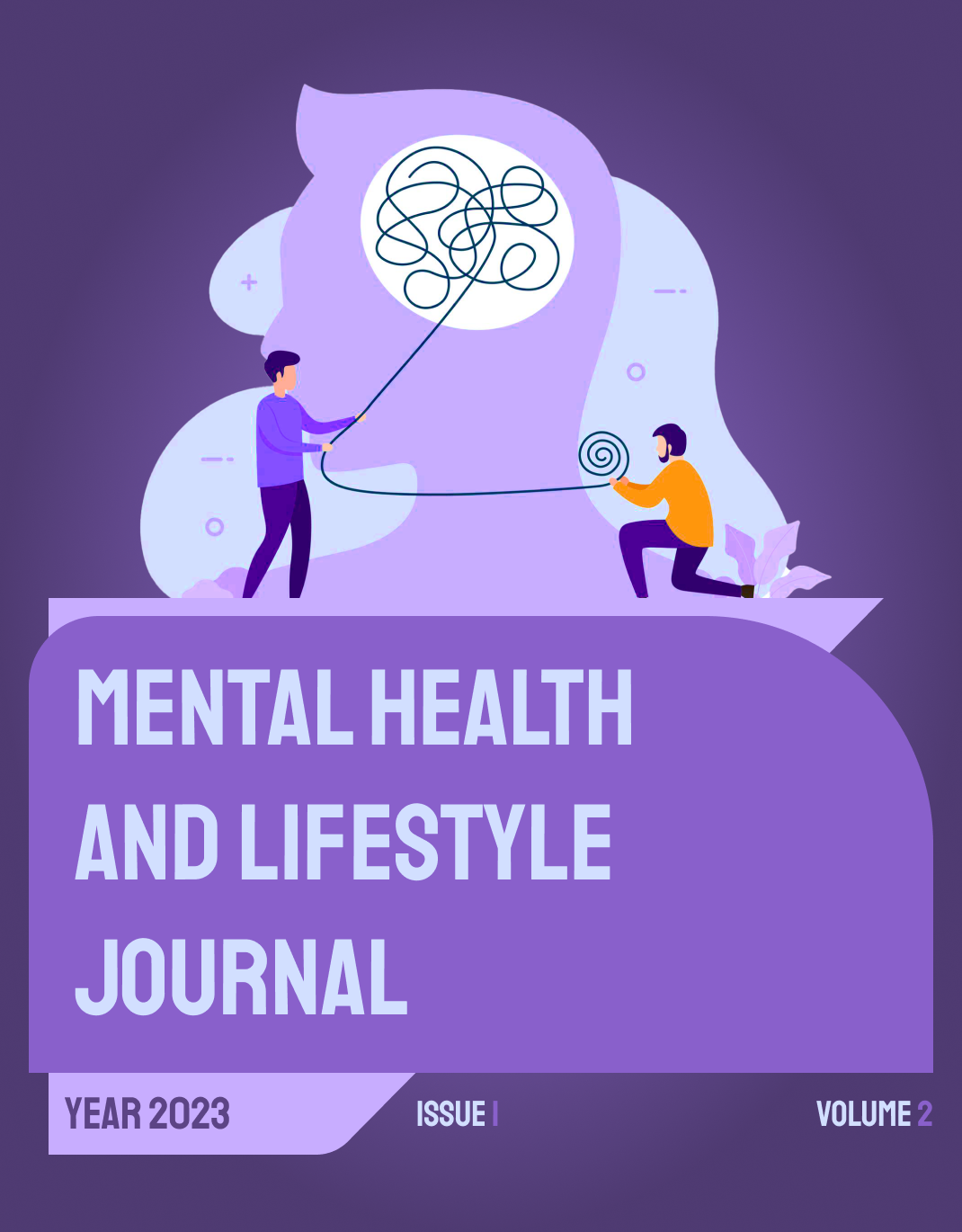The Influence of Negative Automatic Thoughts and Sleep Dysfunction on Depression Severity
Keywords:
Depression severity, Negative automatic thoughts, Sleep dysfunction, Cognitive predictors, Mental healthAbstract
This study aimed to examine the predictive influence of negative automatic thoughts and sleep dysfunction on depression severity in a Brazilian adult population. A correlational descriptive design was employed involving 430 adult participants from Brazil, selected based on the Morgan and Krejcie sample size determination table. Participants completed the Beck Depression Inventory-II (BDI-II) for depression severity, the Automatic Thoughts Questionnaire (ATQ) for negative automatic thoughts, and the Pittsburgh Sleep Quality Index (PSQI) for sleep dysfunction. All instruments used were standardized, with confirmed validity and reliability in previous studies. Data were analyzed using IBM SPSS-27. Pearson correlation was used to assess bivariate relationships between variables, and multiple linear regression was performed to evaluate the joint predictive power of negative automatic thoughts and sleep dysfunction on depression severity. Pearson correlation analysis revealed a strong positive correlation between depression severity and negative automatic thoughts (r = .71, p < .01), and a moderate correlation with sleep dysfunction (r = .58, p < .01). Multiple regression analysis indicated that both predictors significantly contributed to the model (F(2, 427) = 262.41, p < .01), explaining 55% of the variance in depression scores (R² = .55). Negative automatic thoughts (β = .61, p < .01) had a stronger predictive effect than sleep dysfunction (β = .28, p < .01). The findings demonstrate that both negative automatic thoughts and sleep dysfunction are significant and independent predictors of depression severity, with cognitive distortions exerting a particularly strong influence. These results highlight the need for integrated interventions that simultaneously target maladaptive thought patterns and sleep disturbances to effectively mitigate depressive symptoms.
Downloads
References
1. Wang Y, Wang X, Liu F, Jiang X, Xiao Y, Dong X, et al. Negative Life Events and Antenatal Depression Among Pregnant Women in Rural China: The Role of Negative Automatic Thoughts. Plos One. 2016;11(12):e0167597. doi: 10.1371/journal.pone.0167597.
2. Kamiya K, Koda R. Connection Between Automatic Thoughts and Negative Rumination in Depressive States of University Students. Stress Science Research. 2016;31(0):41-8. doi: 10.5058/stresskagakukenkyu.2016005.
3. Altun ÖŞ, Özer D, Bulut R, Şahin F. Investigation of the Relationship Between the Negative Automatic Thoughts of Patients With Schizophrenia and Their Levels of Social Functionality. Perspectives in Psychiatric Care. 2021;58(4):1819-25. doi: 10.1111/ppc.12994.
4. Üşenmez TY, Şanlı ME. Effect of Negative Automatic Thoughts on Medication Adherence in Individuals With Schizophrenia. Psychiatric Annals. 2023;53(11):518-24. doi: 10.3928/00485713-20230912-01.
5. Budak FK, Üşenmez TY, Özdemir A. The Effect of Negative Automatic Thoughts on Hope in Patients With Schizophrenia. Perspectives in Psychiatric Care. 2020;57(2):936-40. doi: 10.1111/ppc.12637.
6. Arimitsu K, Hofmann SG. Cognitions as Mediators in the Relationship Between Self-Compassion and Affect. Personality and Individual Differences. 2015;74:41-8. doi: 10.1016/j.paid.2014.10.008.
7. Esbjørn BH, Falch A, Walczak M, Normann N, Breinholst S. Social Anxiety Disorder in Children: Investigating the Relative Contribution of Automatic Thoughts, Repetitive Negative Thinking and Metacognitions. Behavioural and Cognitive Psychotherapy. 2020;49(2):159-71. doi: 10.1017/s1352465820000430.
8. Gústavsson SM. BELIEVABILITY OF NEGATIVE AUTOMATIC THOUGHTS Measuring Believability of Negative Automatic Thoughts: Evaluation of the Automatic Thoughts Questionnaire -Believability Scale 1. 2019. doi: 10.13140/rg.2.2.14254.25922.
9. Pugh M. Using Chairwork to Address Negative Automatic Thoughts. 2019:71-81. doi: 10.4324/9780429023927-19.
10. Tomlinson G, Slater D. Challenging Negative Automatic Thoughts. 2017:81-102. doi: 10.4324/9781315171616-12.
11. Baker AW, Keshaviah A, Goetter EM, Bui É, Swee MB, Rosencrans P, et al. Examining the Role of Anxiety Sensitivity in Sleep Dysfunction Across Anxiety Disorders. Behavioral Sleep Medicine. 2016;15(3):216-27. doi: 10.1080/15402002.2015.1120202.
12. Akbeniz A, Budak FK. Menopoz Döneminde Olumsuz Düşüncelerin Toplumsal Kanser Damgasına Etkisi. Anatolian Journal of Health Research. 2023;Volume 4 Issue 2(Volume 4 Issue 2):35-8. doi: 10.29228/anatoljhr.69122.
13. Tanrıverdi S, Şen MA, Genç H. Assessment of Preoperative Anxiety and Negative Automatic Thoughts in Patients Waiting for Corneal Transplantation. European Journal of Clinical and Experimental Medicine. 2024;22(1):30-5. doi: 10.15584/ejcem.2024.1.3.
14. Inasaridze K. Automatic Thoughts. 2022. doi: 10.31234/osf.io/c9vhb.
15. Bibi A. Dysfunctional Attitudes and Automatic Thoughts Among University Students of Pakistan. Open Access Journal of Complementary & Alternative Medicine. 2020;2(5). doi: 10.32474/oajcam.2020.02.000149.
16. Özbiler Ş, Taner M, Francis M. New Paths for Parental Warmth and Subjective Well-Being: The Mediator Roles of Negative Automatic Thoughts. Psychological Reports. 2023;128(2):518-38. doi: 10.1177/00332941231159606.
17. Zhang R, Xie R, Feng J, Ding W, Song S, Yang Q, et al. The Bidirectional Relationship Between Parental Psychological Control, Negative Automatic Thoughts, and Bullying in Chinese Children: A 2-Year Longitudinal Study. Psychology of Violence. 2024. doi: 10.1037/vio0000585.
18. Feger D. Automatic Negative Thoughts and Their Influence on Our Feelings. 2020. doi: 10.6084/m9.figshare.11954808.v5.
19. Ayhan MO, Budak FK. The Correlation Between Mindfulness and Negative Automatic Thoughts in Depression Patients. Perspectives in Psychiatric Care. 2021;57(4):1944-9. doi: 10.1111/ppc.12770.
Downloads
Published
Submitted
Revised
Accepted
Issue
Section
License

This work is licensed under a Creative Commons Attribution-NonCommercial 4.0 International License.










